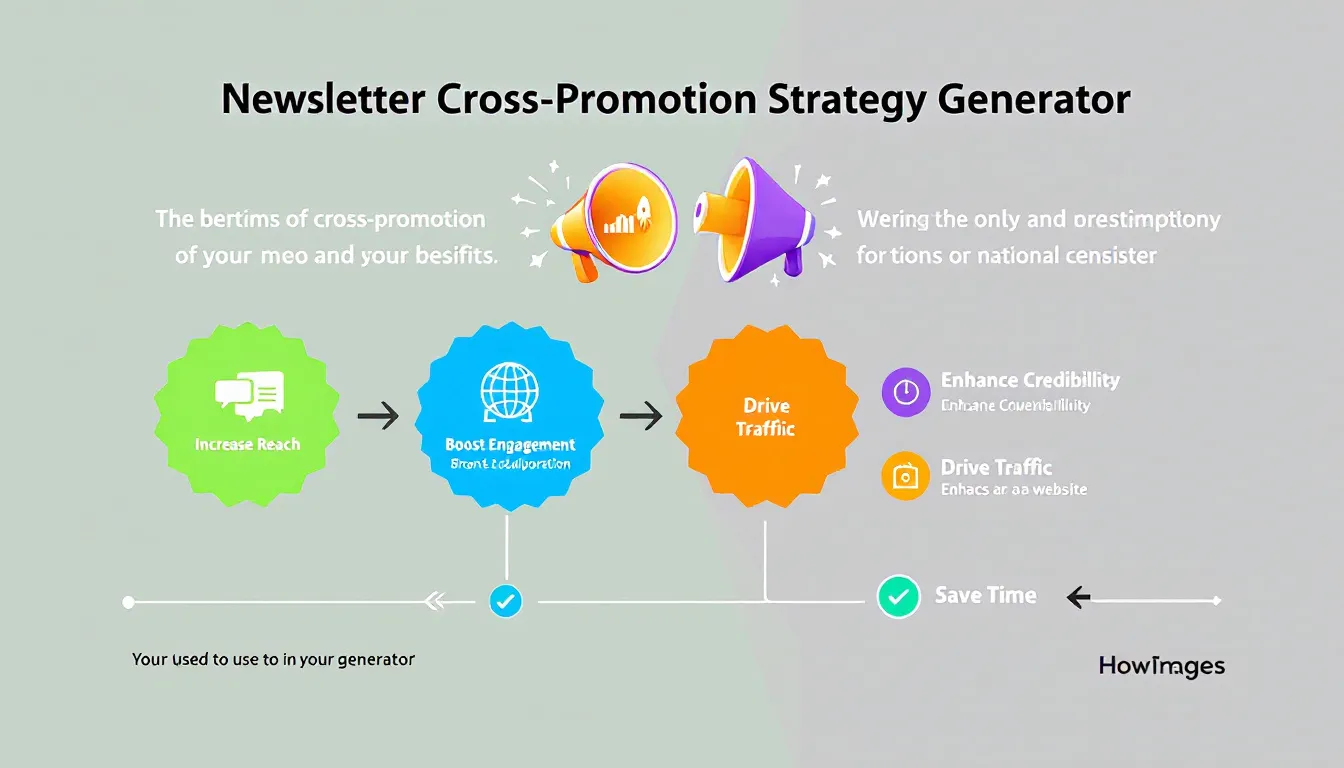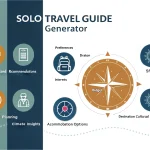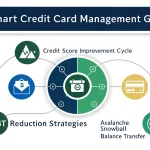Newsletter Cross-Promotion Strategies
Is this tool helpful?
How to Use the Newsletter Cross-Promotion Strategy Generator Effectively
Follow these steps to get personalized cross-promotion strategies tailored to your newsletter’s niche and audience:
- Enter your newsletter topic or niche: Specify the focus of your content, such as “Eco-friendly travel tips” or “Home DIY projects”. This helps the tool understand your area of expertise.
- Input your subscriber count: Provide the estimated number of current subscribers. Examples: 3,200 or 12,000. This helps scale recommendations to your audience size.
- Describe your target audience: Briefly outline who your readers are. For instance, “Young adults aged 20-35 interested in budget travel” or “DIY enthusiasts focused on sustainable home improvements”. This targets strategies to their interests.
- Optional: Share collaboration preferences: Add any specific types of partnerships you prefer, like “Interested in co-hosting webinars about eco-travel gear” or “Open to guest articles related to sustainable living”. This guides personalized strategy suggestions.
- Generate your strategies: Click the button to receive customized cross-promotion ideas designed to grow your newsletter audience effectively.
- Review and apply: Read through the generated strategies carefully and select those that fit your goals and resources to implement in your marketing plan.
Introduction to the Newsletter Cross-Promotion Strategy Generator
The Newsletter Cross-Promotion Strategy Generator helps you expand your subscriber base through smart collaboration. By analyzing your newsletter’s niche, audience size, target readers, and preferred partnership methods, this tool creates tailored strategies that connect you with complementary content creators.
Cross-promotion leverages mutually beneficial partnerships to share audiences, increase reach, and drive engagement. This generator simplifies the process by providing actionable ideas, saving you time and effort in planning effective marketing campaigns.
Using this tool ensures your cross-promotion tactics align with your newsletter’s unique profile, increasing the success rate and quickly unlocking new subscriber growth opportunities.
Key Benefits of the Generator
- Personalized strategy recommendations based on your input increase relevance and success chances.
- Saves time and effort by offering ready-to-use cross-promotion ideas tailored to your newsletter.
- Encourages diverse partnership approaches including guest content, webinars, and social media collaborations.
- Adapts recommendations whether you have hundreds or tens of thousands of subscribers.
- Helps break growth plateaus by opening doors to new audiences beyond your current network.
Practical Applications of the Tool
This generator targets newsletter creators who want to grow and engage their audience through strategic collaborations. It suggests realistic, effective cross-promotion tactics tailored to your newsletter’s specifics.
Example Use Case 1: Health & Wellness Newsletter
- Newsletter topic: Holistic health and wellness tips
- Subscribers: 4,500
- Target audience: Adults aged 30-50 interested in natural remedies and mindfulness
- Generated strategies might include:
- Collaborating with a nutritionist’s newsletter for a joint webinar.
- Guest blogging swaps with meditation-focused newsletters.
- Co-hosting social media challenges on wellness habits.
Example Use Case 2: Financial Literacy Newsletter
- Newsletter topic: Personal finance for young professionals
- Subscribers: 9,000
- Target audience: Individuals ages 22-35 seeking budgeting and investment advice
- Generated strategies might include:
- Partnering with a career advice newsletter for crossover content.
- Exchanging ad placements with a student loan refinancing newsletter.
- Launching a joint podcast series on financial goal-setting.
Understanding Cross-Promotion: A Key Growth Strategy
Cross-promotion helps you reach new subscribers by collaborating with content creators who share similar yet not identical audiences. Common cross-promotion tactics include:
- Newsletter swaps: Trading mentions or dedicated sections in each other’s newsletters.
- Guest editorials: Writing or hosting content on a partner’s platform.
- Co-created content: Developing joint resources like ebooks or podcasts.
- Shared webinars or events: Hosting online sessions together.
- Social media shoutouts: Promoting partners’ content across channels.
- Co-branded campaigns: Joint marketing efforts to build credibility and reach.
Choosing the Right Cross-Promotion Partner
Successful partnerships target audiences that complement your own without complete overlap. This introduces your newsletter to fresh, relevant readers likely to engage and subscribe.
How to Measure the Success of Your Cross-Promotion Efforts
Track these metrics to evaluate impact and optimize future strategies:
- Subscriber growth rate: New subscribers gained during and after the campaign.
- Open rates and click-throughs: Engagement with collaborative content.
- Social shares and comments: Audience interaction on partnership promotions.
- Retention of new subscribers: Long-term engagement of cross-promotion traffic.
Use tools like UTM parameters and dedicated landing pages to attribute new sign-ups accurately.
Frequently Asked Questions
1. How often should I run cross-promotion campaigns?
Aim for one significant collaboration each month and smaller promotions as opportunities arise. This keeps your content fresh and your audience engaged without overwhelming them.
2. What if I can’t find newsletter partners?
Expand your search to bloggers, podcasters, and social media influencers in related niches. Participate in online communities and virtual events to build your network.
3. How should I approach potential collaboration partners?
Be clear about mutual benefits. Share your audience demographics, engagement rates, and specific ideas. Stay open and professional to build trust and a strong partnership.
4. Can niche newsletters benefit from cross-promotion?
Yes. Niche newsletters thrive on audiences with targeted interests. Partner with related niches to attract relevant subscribers eager for your specialized content.
5. What if I don’t see immediate growth from cross-promotion?
Growth may take time. Analyze what worked, gather audience feedback, and refine your approach. Building relationships and trust with new audiences is a long-term effort.
6. How do I keep my current audience engaged during cross-promotions?
Maintain your newsletter’s voice and value. Introduce partner content that complements your readers’ interests. Communicate clearly about collaborations to keep your audience informed and interested.
7. Can I use this tool’s strategies for other content marketing?
Absolutely. Many cross-promotion principles apply to blogs, podcasts, social media channels, and more. Adapt the ideas to match your other marketing efforts.
8. How to handle audience size differences when partnering?
Focus on the value exchange rather than size alone. Collaborate so both parties benefit—smaller newsletters can offer highly engaged audiences, while larger ones provide broad exposure. Align goals and expectations for a balanced partnership.
Important Disclaimer
The calculations, results, and content provided by our tools are not guaranteed to be accurate, complete, or reliable. Users are responsible for verifying and interpreting the results. Our content and tools may contain errors, biases, or inconsistencies. Do not enter personal data, sensitive information, or personally identifiable information in our web forms or tools. Such data entry violates our terms of service and may result in unauthorized disclosure to third parties. We reserve the right to save inputs and outputs from our tools for the purposes of error debugging, bias identification, and performance improvement. External companies providing AI models used in our tools may also save and process data in accordance with their own policies. By using our tools, you consent to this data collection and processing. We reserve the right to limit the usage of our tools based on current usability factors.







